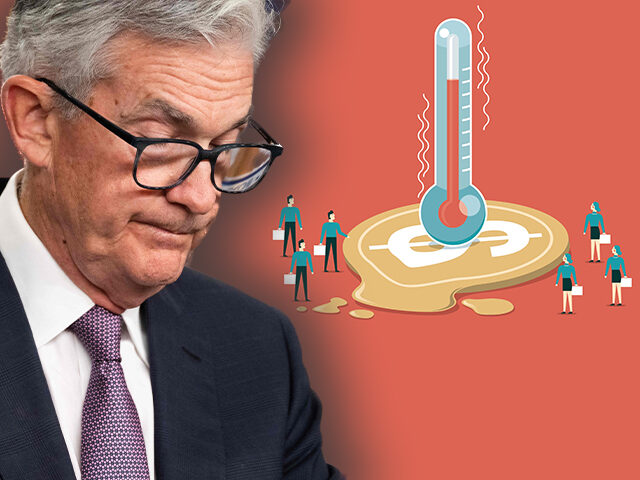The Fed’s View of Economy Is Increasingly Outdated
The Federal Reserve is falling behind the curve again.
The Fed on Wednesday left its benchmark federal funds target unchanged at a range of 5.25 percent to 5.50 percent, a decision well-telegraphed to markets by central bank officials over the weeks since the September meeting. Increasingly, however, the economic data is challenging the Fed’s view that the economy is decelerating enough to bring inflation down to its two percent target.
The Labor Department’s report on its Job Openings and Labor Turnover Survey, or JOLTS, showed no signs of cooling demand for labor. Job openings came in at 9.6 million, slightly above the downwardly revised estimate 9.5 million for the prior month. Economists had forecast the openings figure to fall to 9.4 million from the initial estimate for the prior month of 9.6 million.
Unrounded, openings were at 9.553 million, up from 9.497 million. While the gain is not especially large, it suggests that the allegedly tightening financial conditions are not acting as a big drag on demand for labor. We now have a two-month trend of rising openings, the opposite of a softening of the labor market.
The JOLTS openings figure is a snapshot of vacancies at the end of each month. The figure released on Wednesday indicates labor demand on the last business day of September. Keep in mind that employers added 336,000 workers to payrolls in September. So, this rise should be read as a sign that even that red-hot hiring spree did not do much to quench the desire to further grow payrolls.
Some analysts have focused on the fact that openings have decreased significantly since last year’s record 12 million. Similarly, those who are optimistic about disinflation point out that inflation has come down from last year’s epic highs. This focus, however, misses the trend. Openings are no longer falling swiftly, just as inflation is no longer declining. We appear to be stuck at a level much higher than is compatible with the Federal Reserve’s two percent inflation target.
No evidence for further labor market cooling in the latest JOLTS data. Yes, labor market is less hot than it was 6-12 months ago. But it is still on the hot side.
Job openings per unemployed at 1.5, down from a high of 2.0. pic.twitter.com/1BOdRCd4Ck
— Jason Furman (@jasonfurman) November 1, 2023
This suggests that financial conditions will have to tighten further to bring down inflation. It’s possible that could happen if bond yields continue to move up, but it’s hard to see why that happens without a change in the consensus view that the Fed will start lowering its interest rate target midway through next year. Indeed, after closing in on five percent a couple of weeks ago, the yield on 10-year Treasuries has fallen to 4.80 percent.
It’s more likely that further tightening will require another Fed hike or, at the very least, a Fed willing to scare the market away from the idea that rate hikes are coming six months from now.
The Housing Market Is Holding Back Quits and Hires
The hires and quits rates have been stable for the last three months, which is read by some as a sign that monetary policy is working to cool off the labor market. That would be a more persuasive reading if inflation were already near the Fed’s target or showing signs that it is moving in the right direction. Unfortunately, stabilization at current levels suggests that inflation might also stabilize at current levels, which means the Fed is failing to establish price stability as defined as two percent inflation.
It’s very likely that the current state of the housing market is depressing quits and hires—and therefore concealing evidence of a still-overheated labor market. High mortgage rates are preventing many homeowners from putting their homes on the market, resulting in rising home prices even though the level of sales is down and there is some evidence that home buying demand is down. This lock-in effect can prevent workers from taking new jobs that would require relocation, which would cause quits and hires to decline even while demand for workers remans high.
To put it differently, given the current state of the housing market, the decline in quits and hires from recent highs may be a signal of rising inflationary pressures. Businesses seeking to add workers will have to increase wages to compensate for higher relocation costs stemming from higher home loan rates.
This could eventually become a drag on growth because it implies an inefficient allocation of labor. Unfortunately, it would be an inflationary drag on growth because it means the labor supply will be limited in an economy while demand for labor remains high. That points toward a risk that we sink into a stagflationary environment next year.


COMMENTS
Please let us know if you're having issues with commenting.